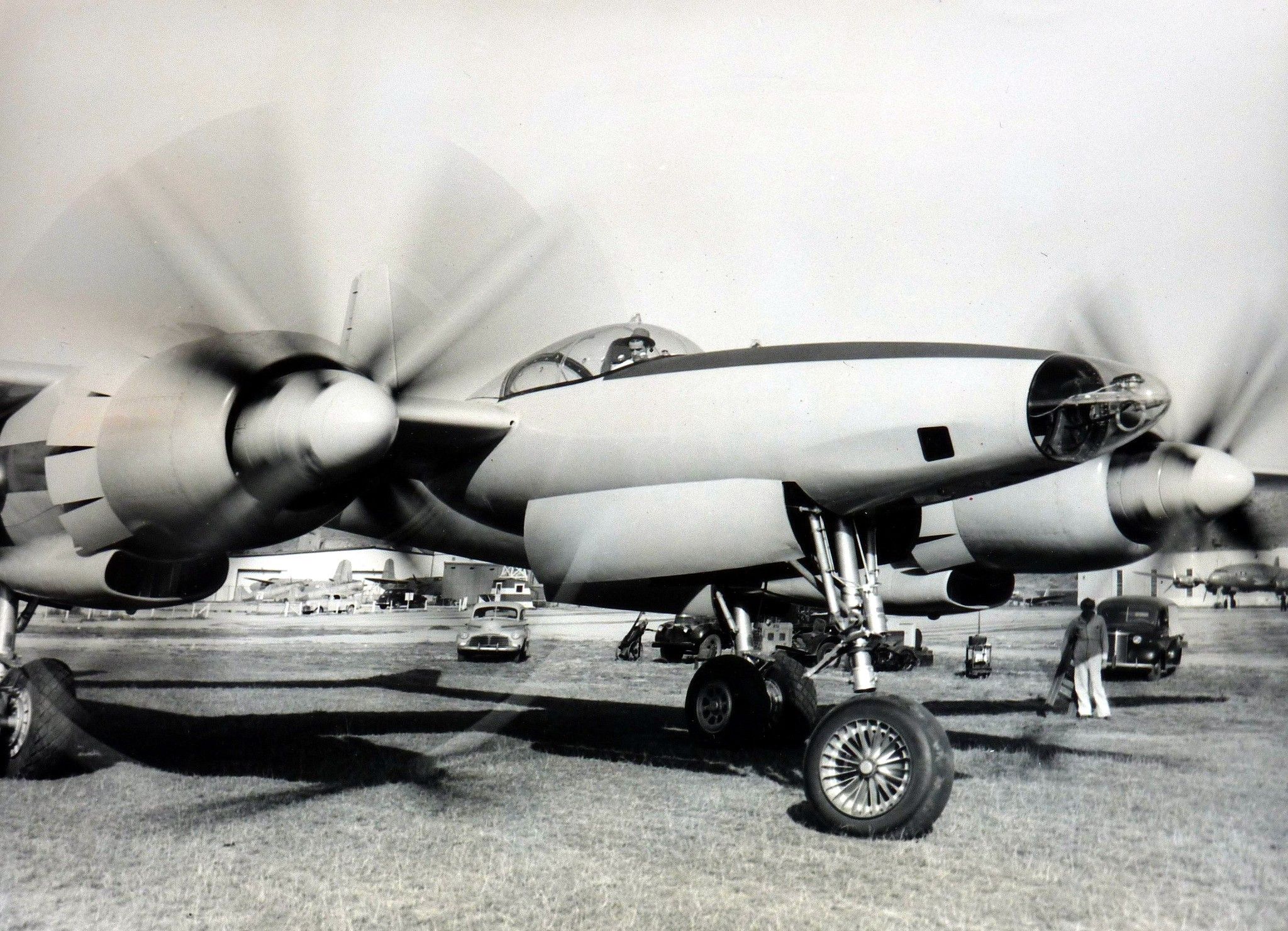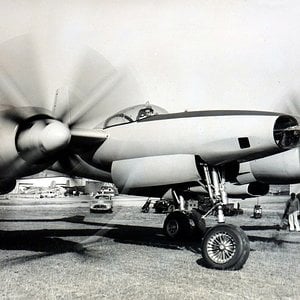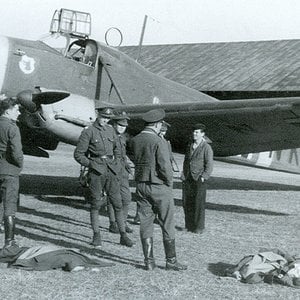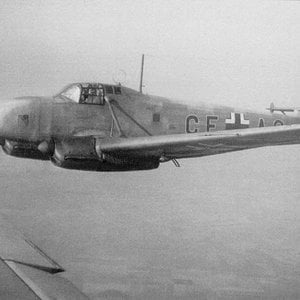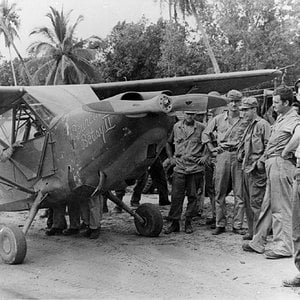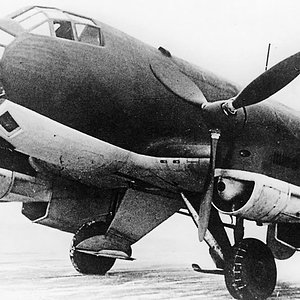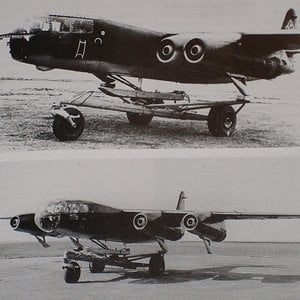Navigation
Install the app
How to install the app on iOS
Follow along with the video below to see how to install our site as a web app on your home screen.
Note: This feature may not be available in some browsers.
More options
You are using an out of date browser. It may not display this or other websites correctly.
You should upgrade or use an alternative browser.
You should upgrade or use an alternative browser.
Design and development
The aircraft was designed to meet the same requirements as the Republic XF-12. Specifications called for a fast, long ranging photo-reconnaissance aircraft. Said to be a scaled-up version of the earlier Hughes D-2, the final design was similar in general appearance to the World War II Lockheed P-38 Lightning.[1] It was a tricycle-gear, twin-engine, twin-boom all-metal monoplane with a pressurized central crew nacelle, with a much larger span and much higher aspect ratio than the P-38's wing.
The XF-11 used Pratt & Whitney R-4360-31 28-cylinder radial engines. Each engine drove a pair of contra-rotating four-bladed, controllable-pitch propellers, which can increase performance and stability, at the cost of increased mechanical complexity.
The Army originally ordered 100 of them for photo reconnaissance. The order was cancelled following the end of World War II, leaving Hughes with two prototypes.
[edit]Operational history
1946 newsreel
The first prototype, tail number 44-70155, piloted by Hughes, crashed on 7 July 1946 while on its maiden flight.[2] An oil leak caused the right-hand propeller controls to lose their effectiveness and the rear propeller subsequently reversed its pitch, disrupting that engine's thrust, which caused the aircraft to yaw hard to the right.[3] Rather than feathering the propeller, Hughes elected to make an emergency landing on the golf course of the Los Angeles Country Club, but about 300 yards short of the course, the aircraft suddenly lost altitude and clipped three houses. The third house was completely destroyed by the fire resulting from the crash and Hughes was nearly killed.[2] The crash is dramatized in the 2004 film The Aviator.
The second prototype was fitted with conventional propellers and flown on 5 April 1947, after Hughes had recuperated from his injuries. This test flight was uneventful and the aircraft proved to be stable and controllable at high speed. However, it lacked low-speed stability as the ailerons were ineffective at low altitudes, and when the Army Air Forces (AAF) evaluated it against the XF-12, testing revealed the XF-11 was harder to fly and maintain, and projected to be twice as expensive to build.[3] A small production order of 98 for the XF-12 went out but the AAF chose the RB-50 Superfortress, and Northrop F-15 Reporter instead, which had similar long-range photo-reconnaissance capability and were available at a much lower cost. The production order was cancelled. When the United States Air Force was created as a separate service in September 1947, the XF-11 was redesignated the XR-11. The surviving XR-11 prototype arrived at Eglin Air Force Base in December 1948 for operational suitability testing.[4]
[edit]Specifications (XF-11)
General characteristics
Crew: two, pilot and navigator/photographer
Length: 65 ft 5 in (19.94 m)
Wingspan: 101 ft 4 in (30.89 m)
Height: 23 ft 2 in (7.06 m)
Wing area: 983 ft² (91.3 m²)
Empty weight: 37,100 lb (16,800 kg)
Max. takeoff weight: 58,300 lb (26,400 kg)
Powerplant: 2 × Pratt & Whitney R-4360-31 radial, 3,000 hp (2,240 kW) each
Performance
Maximum speed: 450 mph (720 km/h)
Range: 5,000 miles (8,000 km)
Service ceiling: 44,000 ft (13,415 m)
The aircraft was designed to meet the same requirements as the Republic XF-12. Specifications called for a fast, long ranging photo-reconnaissance aircraft. Said to be a scaled-up version of the earlier Hughes D-2, the final design was similar in general appearance to the World War II Lockheed P-38 Lightning.[1] It was a tricycle-gear, twin-engine, twin-boom all-metal monoplane with a pressurized central crew nacelle, with a much larger span and much higher aspect ratio than the P-38's wing.
The XF-11 used Pratt & Whitney R-4360-31 28-cylinder radial engines. Each engine drove a pair of contra-rotating four-bladed, controllable-pitch propellers, which can increase performance and stability, at the cost of increased mechanical complexity.
The Army originally ordered 100 of them for photo reconnaissance. The order was cancelled following the end of World War II, leaving Hughes with two prototypes.
[edit]Operational history
1946 newsreel
The first prototype, tail number 44-70155, piloted by Hughes, crashed on 7 July 1946 while on its maiden flight.[2] An oil leak caused the right-hand propeller controls to lose their effectiveness and the rear propeller subsequently reversed its pitch, disrupting that engine's thrust, which caused the aircraft to yaw hard to the right.[3] Rather than feathering the propeller, Hughes elected to make an emergency landing on the golf course of the Los Angeles Country Club, but about 300 yards short of the course, the aircraft suddenly lost altitude and clipped three houses. The third house was completely destroyed by the fire resulting from the crash and Hughes was nearly killed.[2] The crash is dramatized in the 2004 film The Aviator.
The second prototype was fitted with conventional propellers and flown on 5 April 1947, after Hughes had recuperated from his injuries. This test flight was uneventful and the aircraft proved to be stable and controllable at high speed. However, it lacked low-speed stability as the ailerons were ineffective at low altitudes, and when the Army Air Forces (AAF) evaluated it against the XF-12, testing revealed the XF-11 was harder to fly and maintain, and projected to be twice as expensive to build.[3] A small production order of 98 for the XF-12 went out but the AAF chose the RB-50 Superfortress, and Northrop F-15 Reporter instead, which had similar long-range photo-reconnaissance capability and were available at a much lower cost. The production order was cancelled. When the United States Air Force was created as a separate service in September 1947, the XF-11 was redesignated the XR-11. The surviving XR-11 prototype arrived at Eglin Air Force Base in December 1948 for operational suitability testing.[4]
[edit]Specifications (XF-11)
General characteristics
Crew: two, pilot and navigator/photographer
Length: 65 ft 5 in (19.94 m)
Wingspan: 101 ft 4 in (30.89 m)
Height: 23 ft 2 in (7.06 m)
Wing area: 983 ft² (91.3 m²)
Empty weight: 37,100 lb (16,800 kg)
Max. takeoff weight: 58,300 lb (26,400 kg)
Powerplant: 2 × Pratt & Whitney R-4360-31 radial, 3,000 hp (2,240 kW) each
Performance
Maximum speed: 450 mph (720 km/h)
Range: 5,000 miles (8,000 km)
Service ceiling: 44,000 ft (13,415 m)

